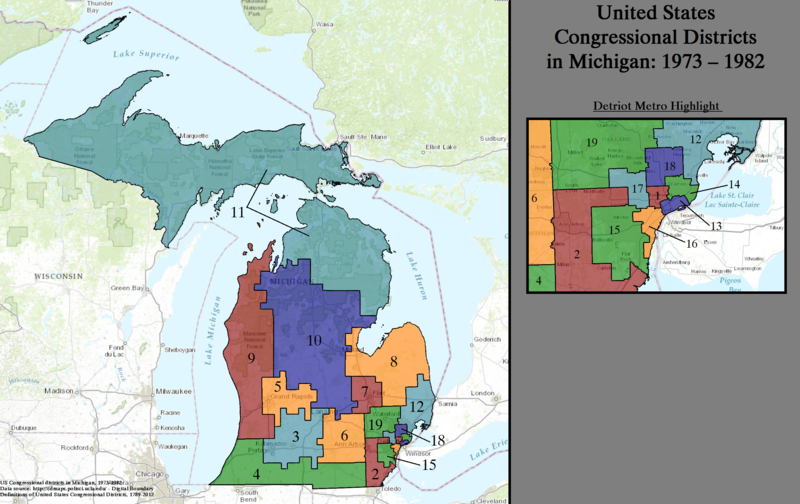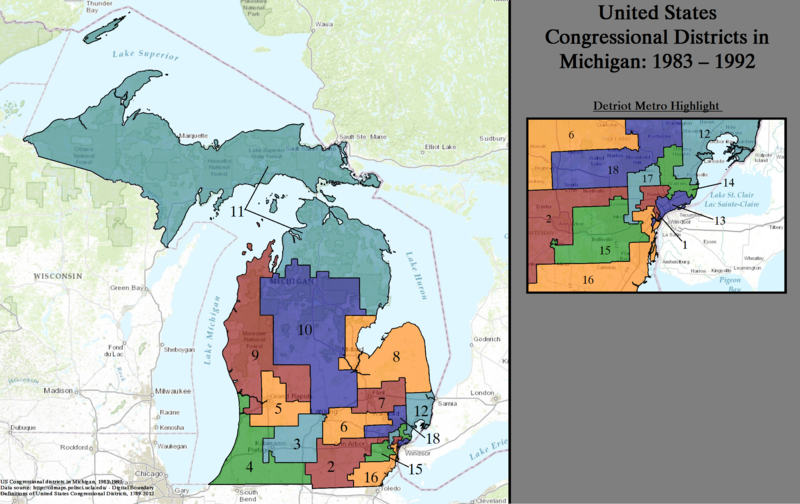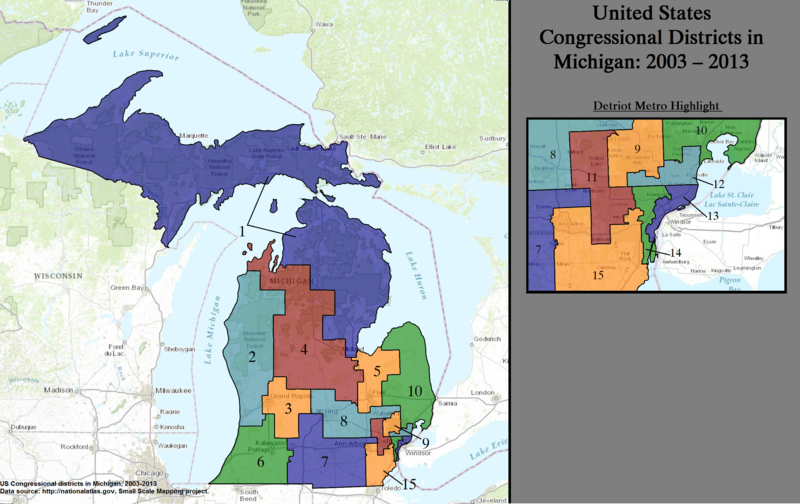
Interactive map version
Michigan is divided into 13 congressional districts, each represented by a member of the United States House of Representatives. [1]
Contents
- Current districts and representatives
- Historical district boundaries
- Obsolete districts
- See also
- Notes
- References
- External links
The districts are currently represented in the 119th United States Congress by 7 Republicans and 6 Democrats.
Due to considerable demographic and population change in Michigan over the years, an individual numbered district today does not necessarily cover the same geographic area as the same numbered district before reapportionment. For example, Pete Hoekstra, Bill Huizenga and John Moolenaar have represented the 2nd district since 1993, but are considered the "successors" of Guy Vander Jagt, since the current 2nd covers most of the territory represented by Vander Jagt in the 9th district before 1993.
Michigan lost a congressional seat after the 2022 midterm elections based on information from the 2020 United States census. [2]































